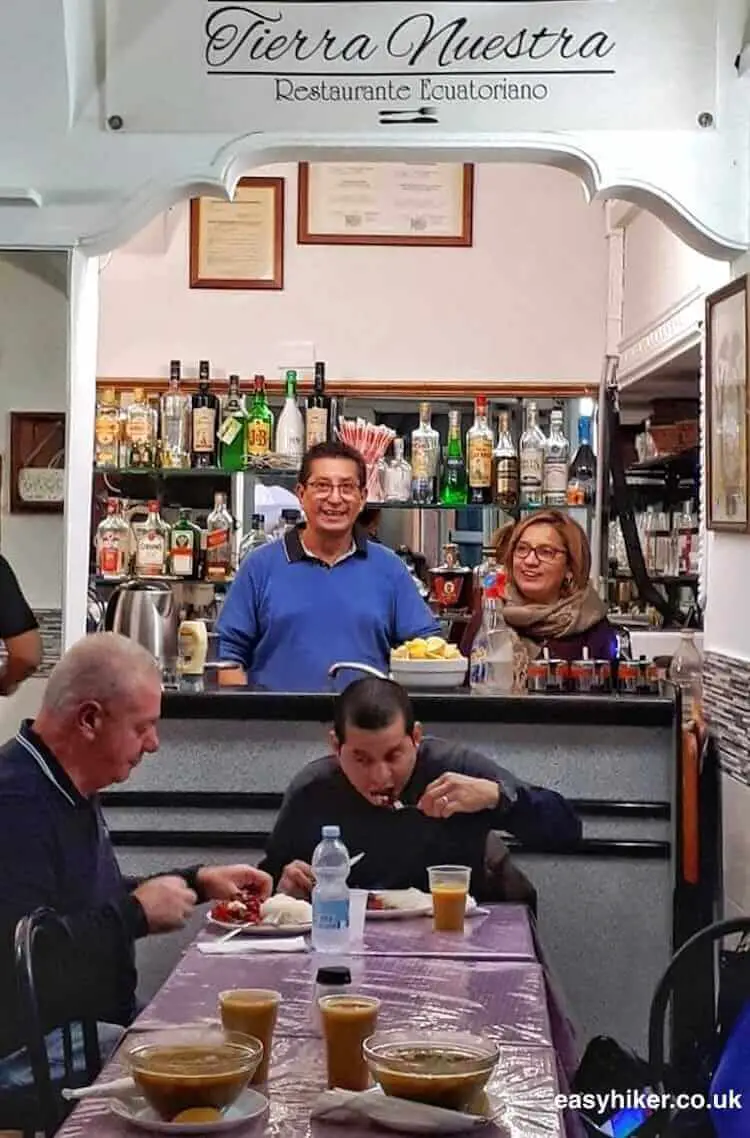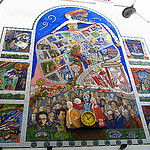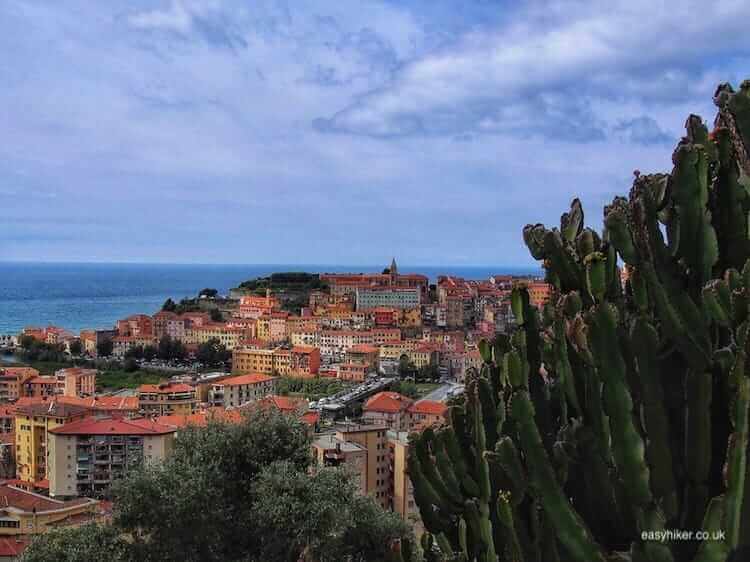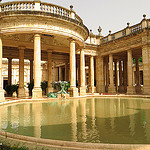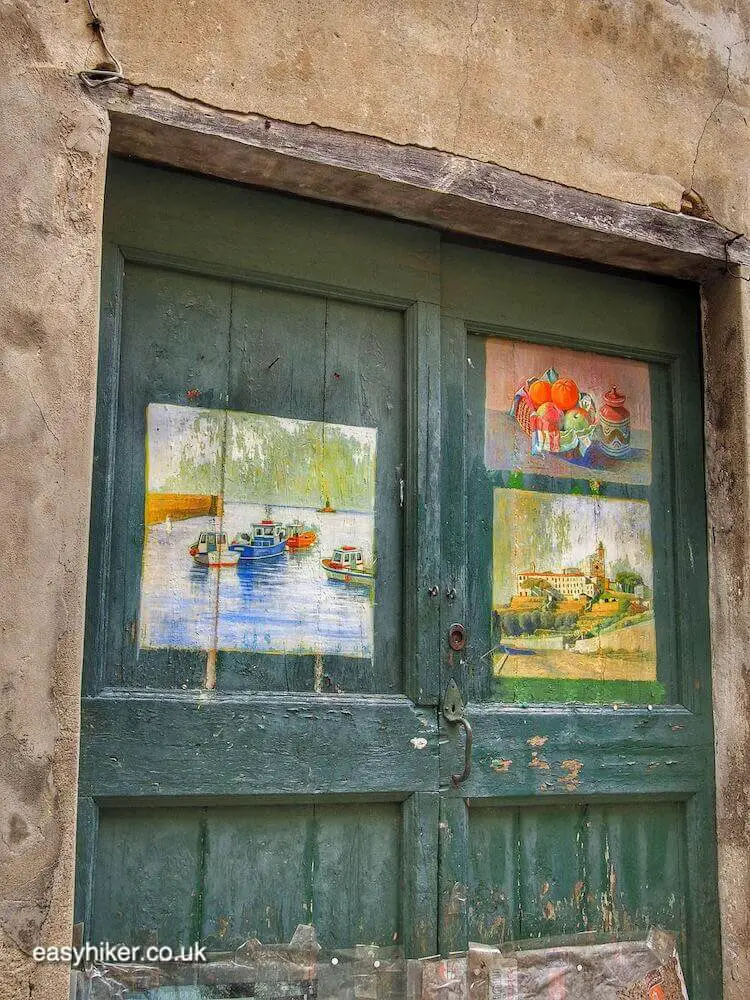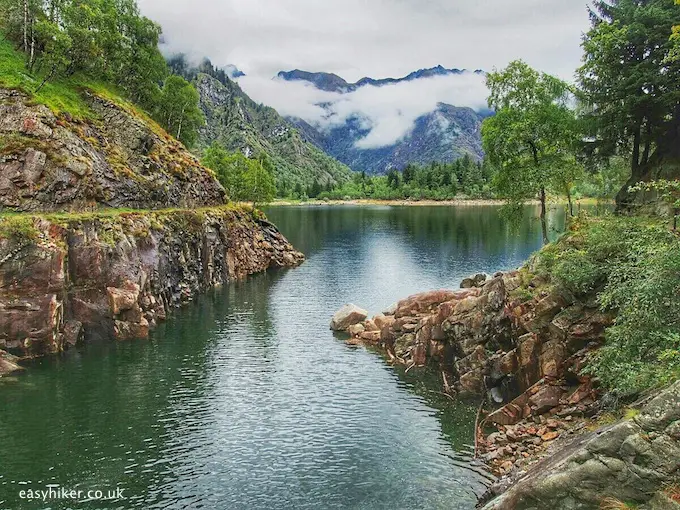Travel destinations can be broadly divided in two categories: the “hedgehogs“ that know how to do one thing only (but know this one thing very well), and the “foxes” that know many things.
If hedgehogs – say the Niagara Falls and Venice – were books, they would be like detective stories: no matter how much you loved the book, there would be little point in carrying it with you so you could read it again and again.
Foxes, conversely, can stay with you for a lifetime: sometimes you simply know, even if you have only just finished a chapter or a paragraph, you will return to it one day.
Cities like that – the gifts that keep on giving – are actually quite rare. New York City is like that, as well as London.
And so is Genoa.
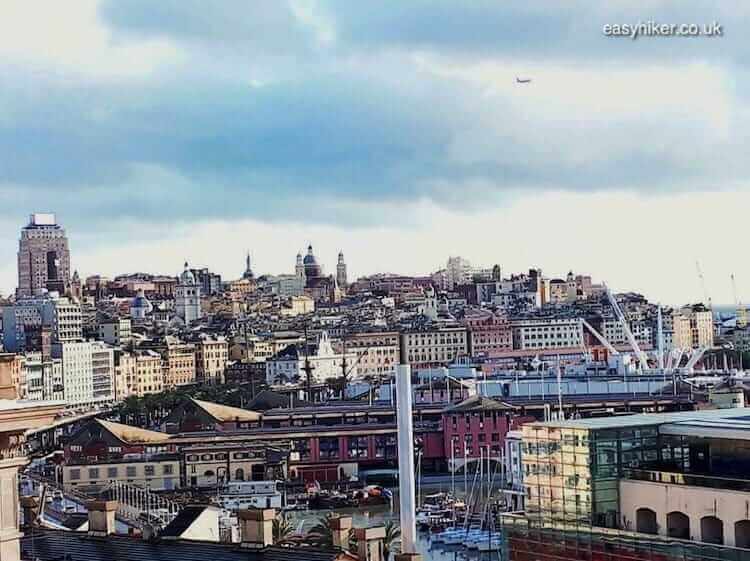
There are many things to love about Genoa, but at a certain level, they all tell the same story: a story of contrasts, of polar opposites that co-exist cheek by jowl.
Genoa – a gift that keeps on giving
There is the harbour area where the tourist marina blends into an industrial cargo-handling-and-ferry operation, there is the claustrophobic Old Town where seedy side streets are rarely more than a single block away from glorious aristocratic palazzi.
Today, we will explore an area where the jagged contrasts of the Old Town give way to the discreet charms of the Italian bourgeoisie in the Carignano quarter between the Old Town and Genoa’s affluent eastern suburbs, concentrating on the quarter’s four large public gardens.
Finish the obligatory visit of the marina …
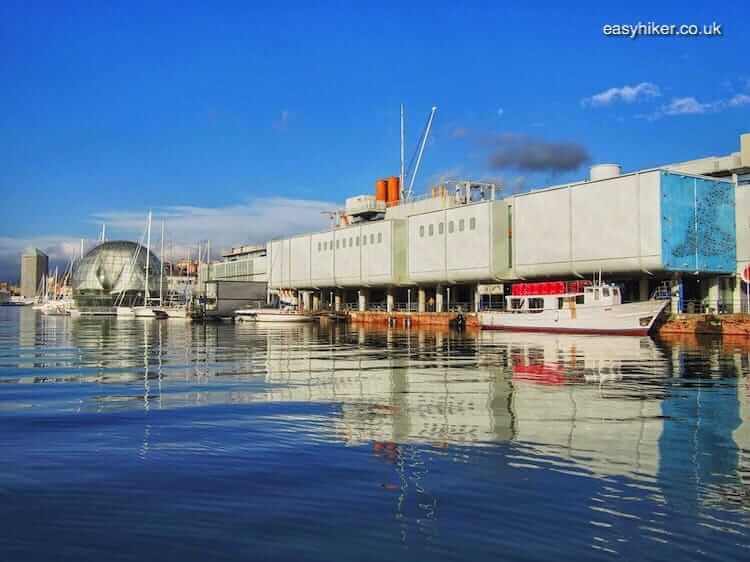
… before, at its extreme eastern edge (near Piazza Cavour), crossing the main road to cut into the Old Town and turning right.
Unless you are blessed with an extremely reliable sense of orientation, we suggest you manage the maze of narrow streets with the assistance of a free mobile app such as Google or Here We Go, ensuring you stay roughly on an eastbound course.
You are now walking through the oldest part of the Old Town, which is less busy but also less squalid than its western counterpart.
The canyons of houses are as steep …
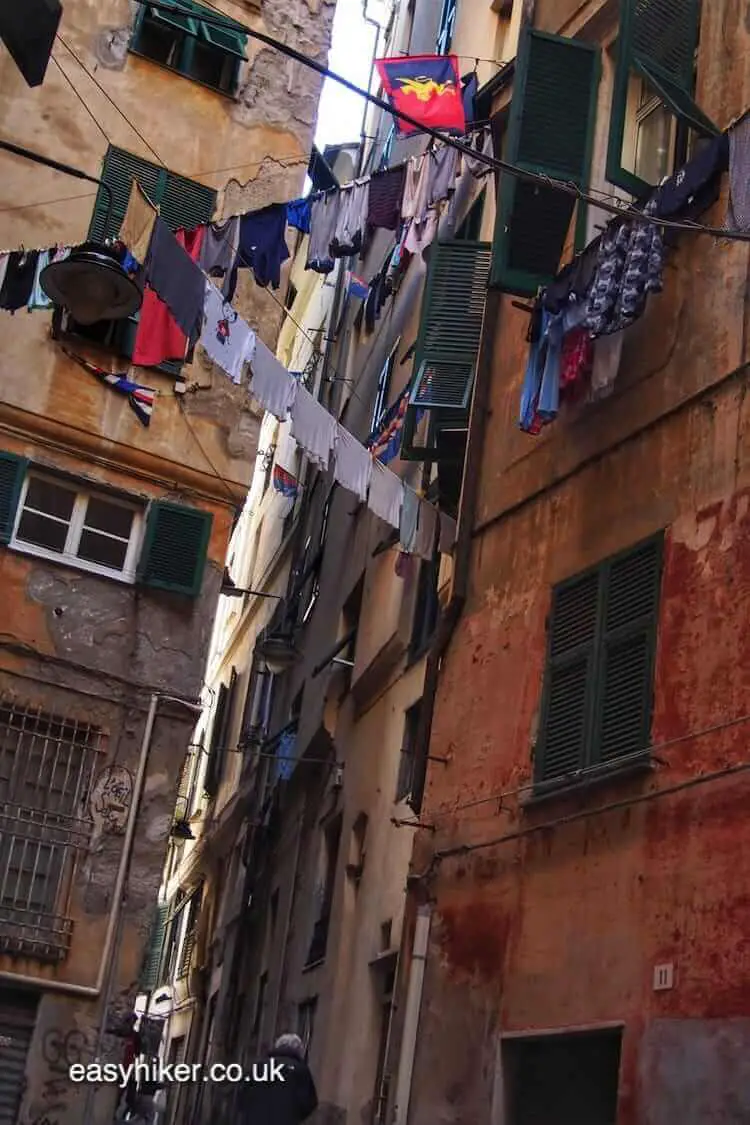
…but openings in the building fabric occur more frequently, giving the area less of a subterranean and dungeon-like feel.
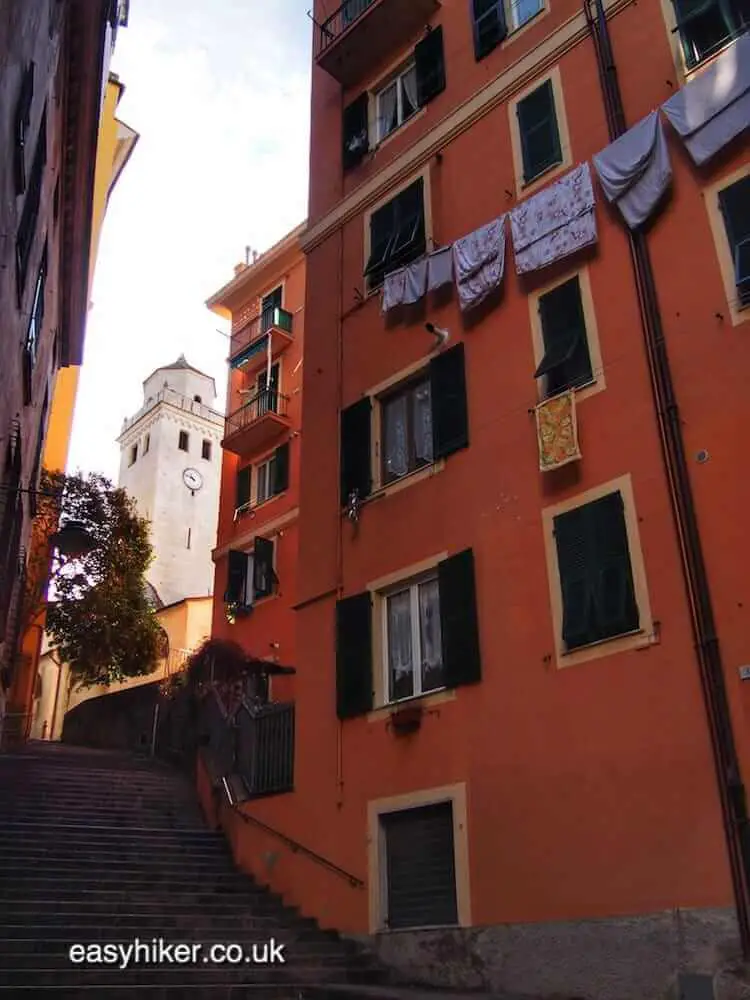
The quarter’s most prominent architectural feature is the Torre degli Embriaci, which was built by and named after Guglielmo Embriaco, the conqueror of Jerusalem during the first crusade (in 1099). T
The Torre is Genoa’s highest tower, but famous mainly for the fact that nobody is quite sure what purpose it once served or why it was constructed in the first place.
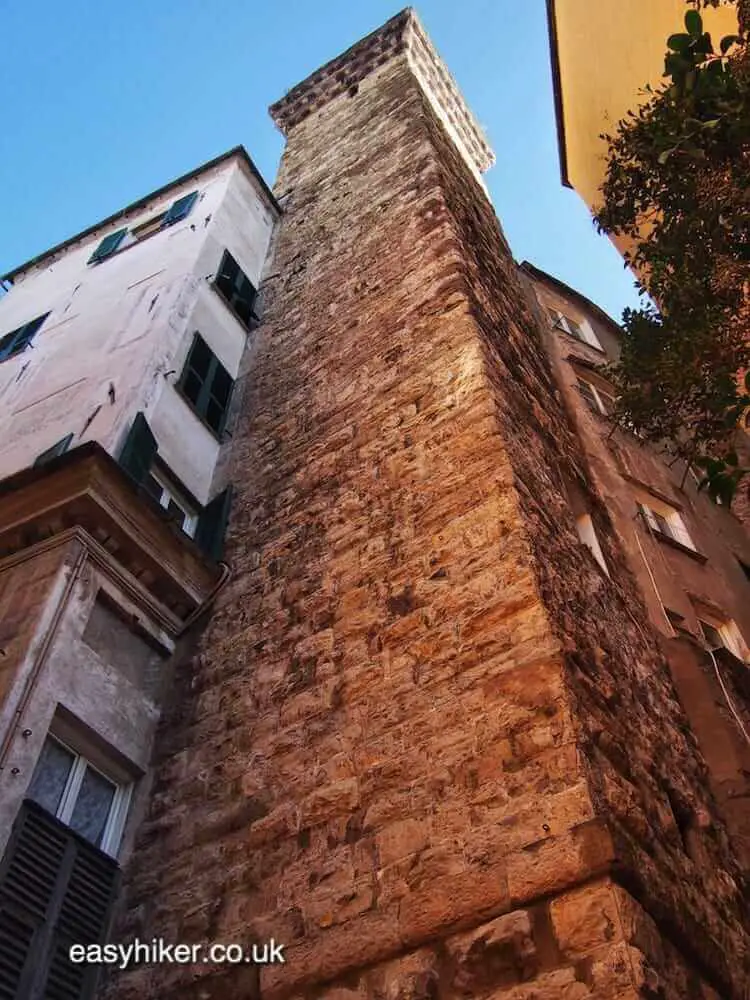
Just before reaching busy Via Casaccie, you will cross the municipal frontier into the Carignano district.
Pay a brief visit to the first garden on our list, the Giardini Baltimora, …
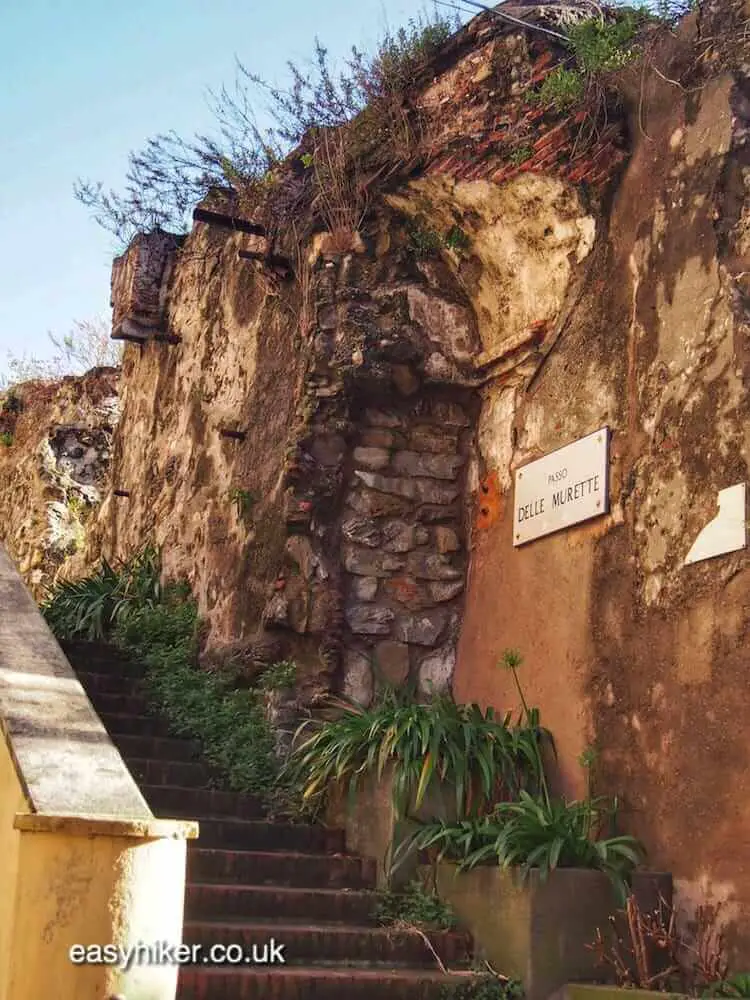
… with the emphasis on “brief” since these gardens are actually little more than a patch of urban rough between high-rise buildings and a viaduct. (More Baltimore than Giardini, one might say.)
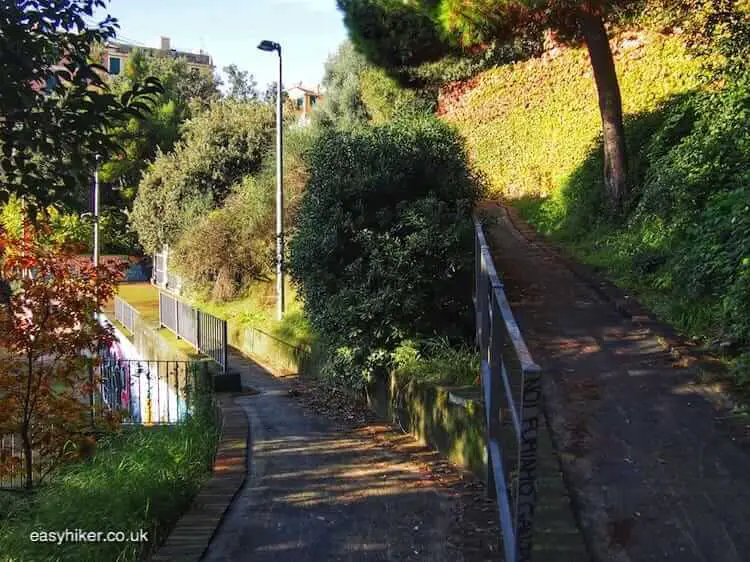
On the far side of the bridge, you can already see Carignano’s most famous building, the Basilica Santa Maria Assunta, which was built (from the 16th century onwards until 1951 when it was finally consecrated) on a hill from where it appears to hover over the Old Town when you enter Genoa from the west.
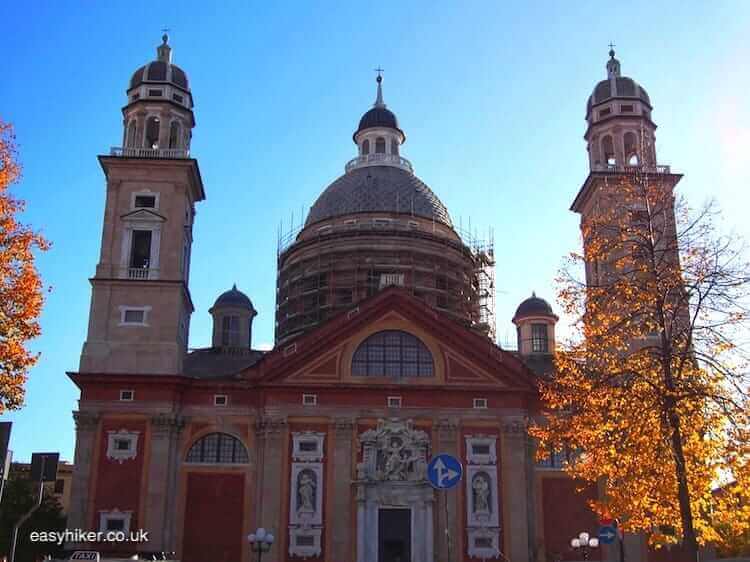
Walk around the church and continue down Via Nino Bixio. Cross over the main road at the end of the street, past the impressive 19th century church of the Sacred Heart, …
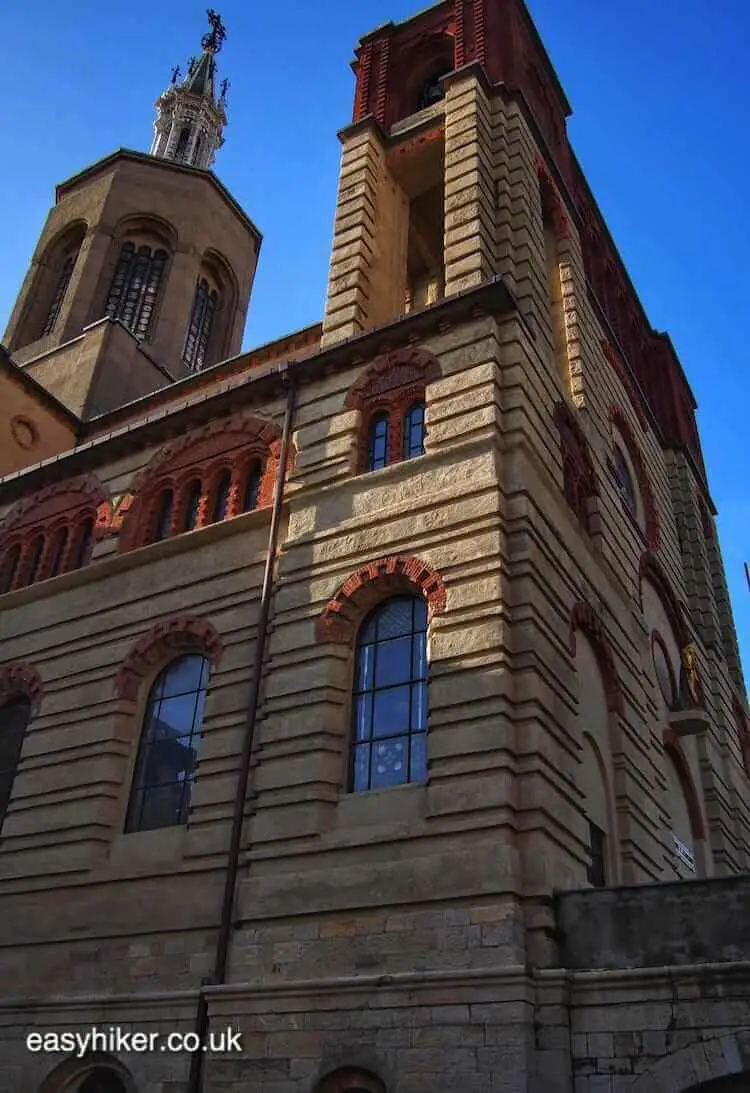
… in the direction of the Parco de Villa Croce. (The most conveniently located entrance is on Via Jacopo Ruffini somewhere on your right.)
The public gardens were originally laid out around an aristocratic 19th century seaside villa, now the Municipal Museum of Contemporary Art.
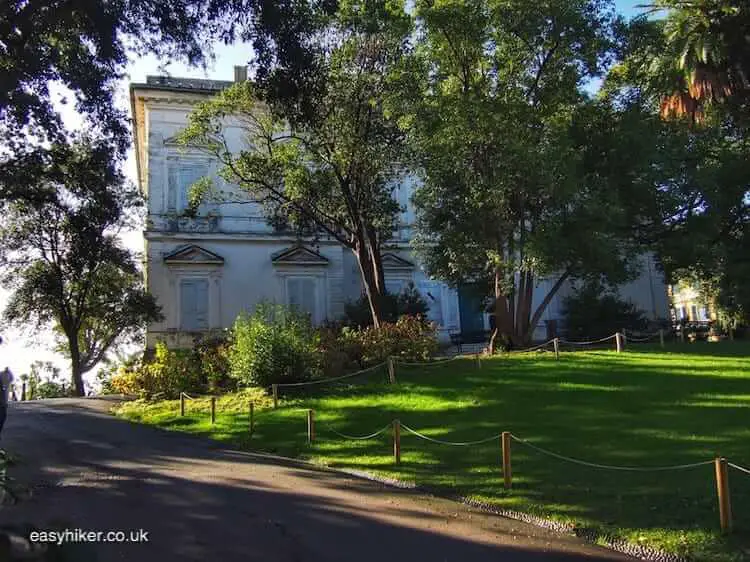
From the sea-facing terrace in the back, you get splendid views towards Nervi and Genoa’s posh eastern suburbs …
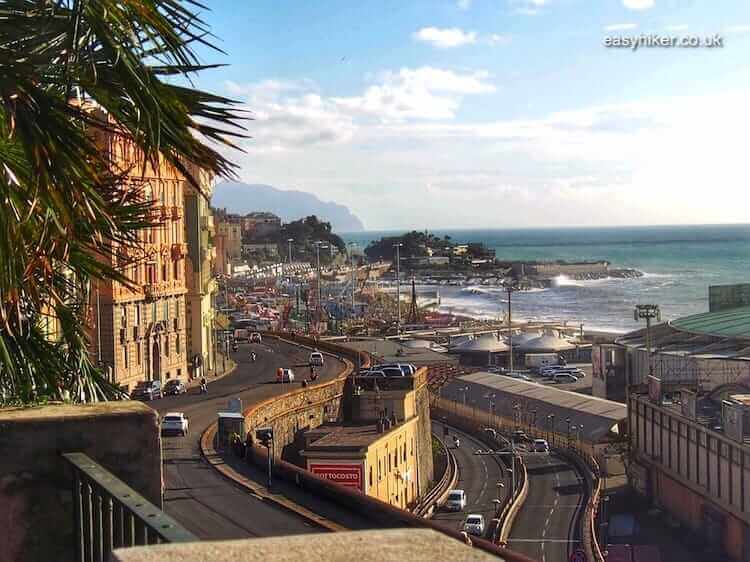
… as well as, on the other side, to the modern harbour.
It is important to note here, I believe, that the contrast between the architectural and carefully landscaped idyll within the park and the harsh realities of its surroundings cannot be blamed on “modern times”.
When the first villa was built here in the 17th century by the Spinola family, one of the clans that held the Genoese Republic in an iron grip for centuries, life for the fishermen and sharecroppers around must have been as hard as it is today for the people who work in the harbour.
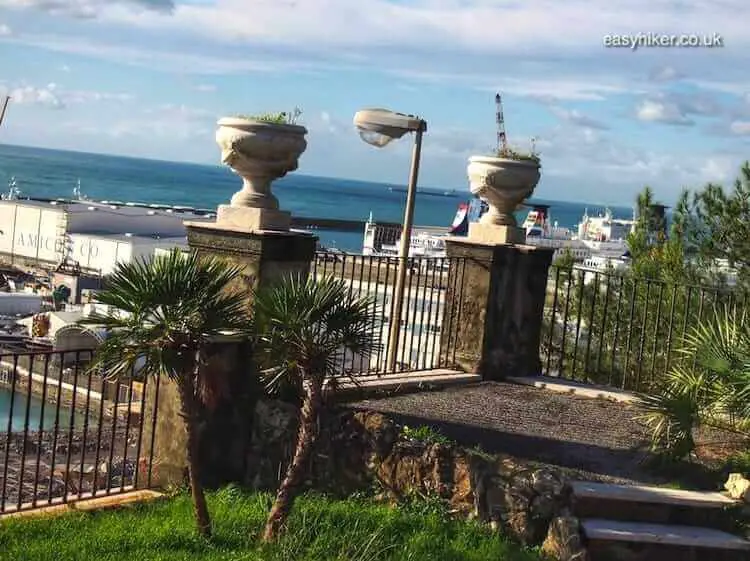
Leave the park through the exit on Corso Mentana and continue into Via Anto Vannucci for a scenic view over the east of the city from what were once the Mure della Cappuccine, the medieval city walls.
It was here where the poet Petrarca stood in 1358 for the view that later inspired his description of Genua as the “Lady of the Sea” that was “proud of her men and her walls”, which gave the city the epithet of La Superba, the “proud one”. (In contrast to which, Venice is known as La Serenissima, the “most serene”).
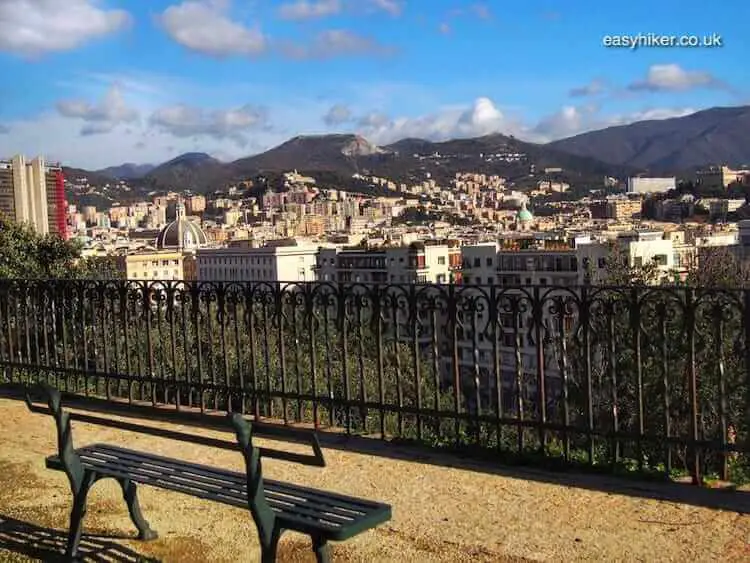
Look for the staircase down into the Giardini Francesco Coco, which is just a few steps away.
Follow the path through the gardens …
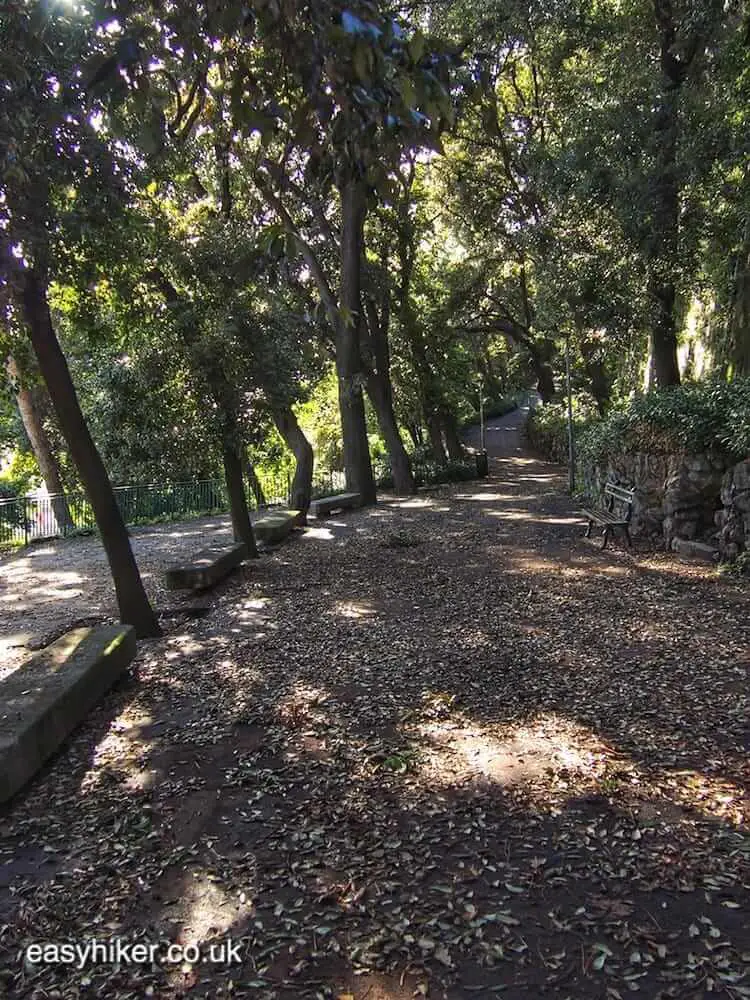
… and walk down the broad stairway at the end to cross Via Armando Diaz.
Behind the triumphal arch, you will reach the Piazza Verdi gardens, the last stop on our itinerary where you can briefly rest to catch your breath or to recapitulate the day’s events.
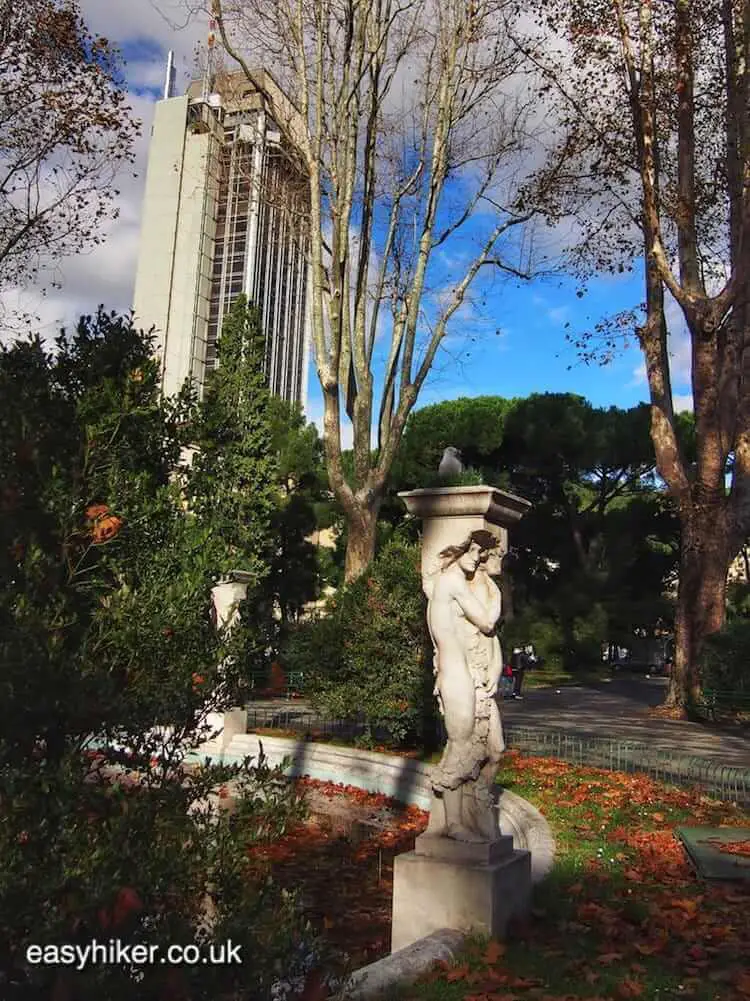
From here, it is only a few steps to the large forecourt that leads straight into Brignole station. From there, you can take a bus, a city rail or a subway train to virtually anywhere else in town.
If you feel peckish, we recommend a 5-minute train ride to Piazza Principe where, just in the back of the city’s second main railway station, you can find hidden another of Genoa’s hidden treasures, albeit one of a different kind.
The Tierra Nuestra restaurant on Salita San Paolo serves Ecuadorean specialties, above all many varieties of the national dish called Encebollado (basically, a fish stew). It’s delicious – and just what il dottore ordered for a brisk winter day.
The restaurant is – rare for an eatery in Italy! – open continuously from lunchtime till late. Buon appetito!
